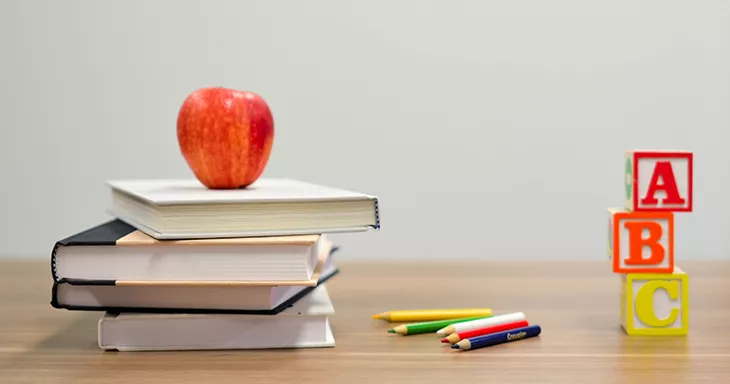Handy Tips For Picking Italian Nursery Teaching Materials
Wiki Article
What Is The Educational And Informational Content That Schools In Primary And Secondary Require?
Many kindergartens or primary schools require a variety of informational, educational and other materials that aid their students in their learning and development. Examples of materials you may require include: Curriculum Materials- These resources will support the learning goals of the curriculum at your school. They could include textbooks, workbooks, lesson plans, and other resources.
Classroom Supplies - For young children, classroom materials such as pencils, paper, scissors, glue, and other arts supplies are essential.
Educational technology: In this digital age, educational technology such as computers, tablets, and interactive whiteboards can help students learn and offer extra resources for students.
Booksfor Kindergarten and Primary schools require a range of age-appropriate literature to help encourage reading and language development.
Manipulatives- Manipulatives like blocks, puzzles, and games help children to develop their problem-solving skills as well as spatial awareness.
Visual aids. Maps, posters charts, and other visual aids can be used to help kids remember important concepts.
Arts and Music Materials Materials for art, instruments such as clay paints, or other materials give children creative outlets and promote self-expression.
Safety equipment - Safety items such as first aid kits, fire extinguishers, and emergency plans posters are crucial to ensure the safety and well-being of staff and students.
In general, elementary and kindergarten schools need the most diverse education materials and resources to ensure a secure and engaging learning environment for students. See the recommended scuola primaria for site info.

What Educational Materials And Aids For Teaching Math Are Recommended By Schools In Italy?
There is a way to assist young children develop their spatial, mathematical, problem-solving, as well as other skills by using mathematical educational resources. Here are some examples of suggested materials: Counting manipulatives Use manipulatives for counting, such as counting bears, blocks and beads are a great way for children to improve their skills at counting, and also their fine motor abilities and hand-eye coordination.
Number cards and charts They can be used as a way to introduce children into numbers and counting. They can be large, vibrant cards or even larger numbers for the wall.
Shape manipulatives can be used to teach children about shapes, their properties and help develop spatial thinking.
Measuring tools: Measuring and measuring tools, such as rulers, measuring tools and scales, could help youngsters to develop and learn their mathematical vocabulary.
Simple puzzles and games Simple puzzles and games like dominoes and matching games, and jigsaw puzzles can help children develop their problem-solving skills and also their focus and attention to detail.
Technology-based learning aids for students. Technology aids like tablets that contain educational math games and apps could help to engage children in classrooms and provide them with extra tools.
Use these tools in a manner that is age-appropriate, and make sure they're safe and appropriate for children. Teachers and caregivers can use these materials to develop exciting, interactive math games which stimulate children's curiosity and their love of learning. Read the top schede didattiche matematica for site advice.

What Materials For Teaching History Are Needed In Italian Schools?
Italian nurseries may need to use history teaching materials to help students understand the past, establish an identity sense, and feel a sense of connection to the past. Here are some examples of the history teaching materials that are necessary: Age-appropriate books: Age-appropriate literature that focuses on historical events, people and different cultures can aid children in developing an interest in history and a sense of connection to the past.
Artifacts and images. Artifacts, like photos and images from various historical periods and cultures can assist children to understand the events of history and their way of life.
Maps and timelines: Children can understand history better by looking at maps and timelines.
Storytelling is a powerful method to engage children in a fun way, and with lasting memories, to historic people or events is through storytelling.
Dramatic Play: Dramatic games allow children to recreate historical moments and events, and gain a better understanding of their significance.
Field excursions. Field trips can include visits to local historical sites, museums and other locations that provide hands-on learning and experience.
It is important to ensure that the history teaching materials provided are age-appropriate and culturally sensitive. Teachers and caregivers are able to use these materials to design stimulating, interactive history lessons for kids that stimulate their curiosity and love of learning. Check out the most popular materiale didattico storia for more examples.

What Geography Educational Materials Do Italian Schools Recommend?
Geography didactic cards can be an effective tool to introduce children in Italian nurseries to basic concepts of geography. Certain kinds of cards could be useful for teaching geography. Continents Cards: The children can be taught about the different continents of the globe, their places, sizes, and their natural features.
Country cards: Country cards can help children learn about different countries, such as their locations, flag, language, and their culture.
Landmark Cards: These cards can be used to educate children about the natural and well-known landmarks around the globe in addition to their location and significance.
Animal cards: Animal cards teach children about various animals and their habitats all over the world, including their diet, behaviors and adaptations.
Weather cards are a great method of teaching children about different kinds of weather, their effects on our environment and natural catastrophes.
Natural Resource Cards: These cards aid children to learn about mineral water, forest, and minerals and other natural resources.
You should choose cards that are engaging, appropriate for ages 0-12 and fun for children of all ages. Teachers and caregivers have the ability to use these cards for engaging, interactive geography games. They can help to increase the children's curiosity in learning about different cultures and countries. View the recommended schede didattiche geografia for website tips.
